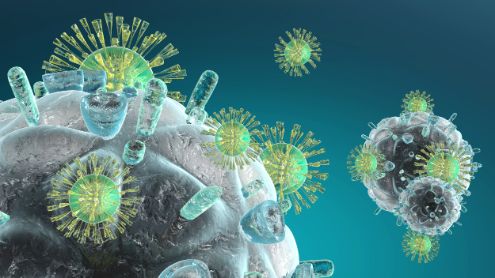A tumor that contains cancer stem cells comes from two different sources. The first is the presence of mutations that inactivate the restrictions that normal stem cells have on their expansion. These mutations also allow transit-amplifying cells to continue proliferating without entering a postmitotic differentiated state, which provides a reservoir of self-renewing cells. These self-renewing cells accumulate mutations, giving rise to cancer stem cells from more differentiated cells.
The concept that cancer stem cells contribute to the onset of a tumor has many implications, including the diagnosis and treatment of the disease. Because the cancer stem cells are the primary driving force behind the growth of a tumor, targeting them is crucial for reducing the risk of recurrence. While the concept of cancer stem cells is not completely proven, the evidence suggests that they will drive the growth of a tumor. If cancer stem cells are not eradicated, chemotherapy treatments may not work as well, and cancer can reappear.
A study in mice showed that CSCs originated in acute myeloid leukemia (AML), a type of blood cancer that develops into multiple types of cancer. It has been found that cancer stem cells can come from both AML and melanoma, but the first solid CSCs were identified in breast tumors in 2003. Other solid cancers that contain CSCs include brain, colon, prostate, pancreatic, and ovarian cancers.
Once scientists have identified cancer stem cells, they can target them with drugs designed to affect their functions. Antisense agents inhibit gene products that block asymmetric cell division, such as Wnt, Hedgehog, and TGF. Other types of agents block specific factors involved in mitosis or inhibit gene expression. Inhibitors of GSK-3b block the native Wnt pathway. Ribozyme agents and antisense molecules can also inhibit the activity of Wnt.
The Hedgehog signaling pathway was first discovered in Drosophila, a fruitfly. It regulates proliferation, migration, and differentiation. Its ligands bind to a 12-pass transmembrane receptor called the Patched. Emerging research indicates that cancer stem cells are also regulated by Hh signaling. This pathway may provide therapeutic opportunities by overcoming tumour heterogeneity. It can even help us develop more effective anticancer agents.
The first test of the hypothesis that cancer stem cells can initiate a new tumour is with an animal model. It has been shown that melanoma tumours contain stem-like cells. These cells are able to initiate heterogeneous tumours, seed them with metastases, and maintain them. Moreover, these tumours contain a reservoir of therapeutically resistant cells. Cancer stem cells are characterized by phenotypic switching triggered by genetic lesions.
Researchers have also been able to identify a protein that can be expressed by adult stem cells. This protein may provide clues to the mechanism for tissue regeneration. The researchers also found that adult stem cells can suppress immune responses to transplanted tissue. A cell surface transporter called ABCB5 is associated with stem cell markers. This antibody is now being studied in clinical trials. A cell receptor that activates ABCB5 can help researchers target these stem cells more effectively.









